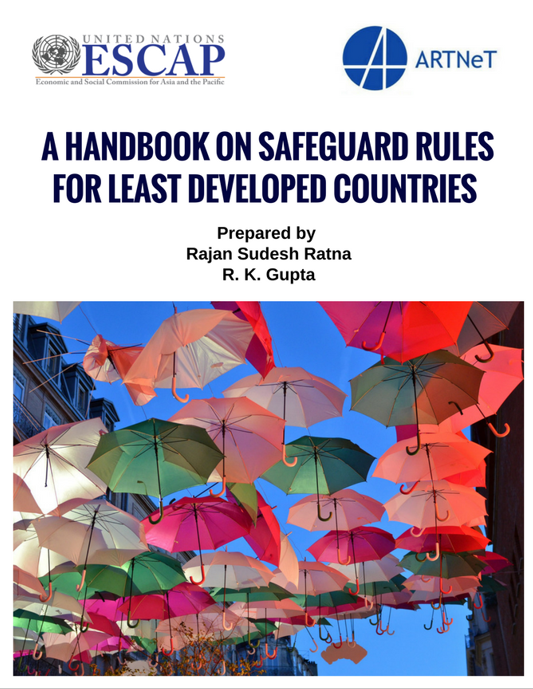A Handbook on Safeguard Rules for Least Developed Countries

Article XIX of GATT (Emergency Action) and the WTO Agreement on Safeguards (1994) allow member States to take safeguard measures to protect domestic producers from serious injury caused by increased imports. These measures can be in the form of an import duty exceeding the bound rate, import quotas (where allowed) or a combination of both as Tariff Rate Quotas. The measures can only be applied for a limited duration, initially lasting for up to four years, and can be extended to a maximum of eight years (10 years in the case of developing countries, including a least developed country) from the date of their initial imposition.
Safeguard measures can be applied only after an investigation has been conducted by a duly appointed competent investigating authority. The investigation must conclude that the domestic industry is facing serious injury, or the threat thereof, caused by increased imports of a product. Further, the investigators must recommend the imposition of safeguard measures to protect the domestic producers of like or directly competitive products. Safeguard measures cannot be applied without such a recommendation. The investigation needs to be made public and known to all interested parties, including domestic producers, importers, exporters and the Governments of the exporting countries.
The objective for using the safeguard measures is to provide the opportunity for domestic producers to become more efficient by protecting them from exposure to competition by increased imports. Domestic producers must provide fair rationale for needing support of protective measures and must formulate an adjustment plan showing how they intent to become sufficiently competitive to face import competition during the period that measures are applied.
Transparency is an important requirement that must be met in the investigation and imposition of safeguard measures. Therefore, the WTO Agreement on Safeguards instructs that all the interested parties (importers, exporters, domestic producers, exporting countries, etc.) must be fully informed through public/trade notices and their views sought during investigation. At the same time, the country initiating the safeguard investigation is required to inform the WTO Committee on Safeguards of the initiation, the finding and the decision to apply or extend a safeguard measure. This manual explains the above-mentioned and other aspects of the imposition of safeguard measures, with a focus on a least developed country, by discussing the provisions of the WTO Agreement on Safeguards (1994) and the procedures to be followed in carrying out an investigation (as defined in Article 3 of the said Agreement).
